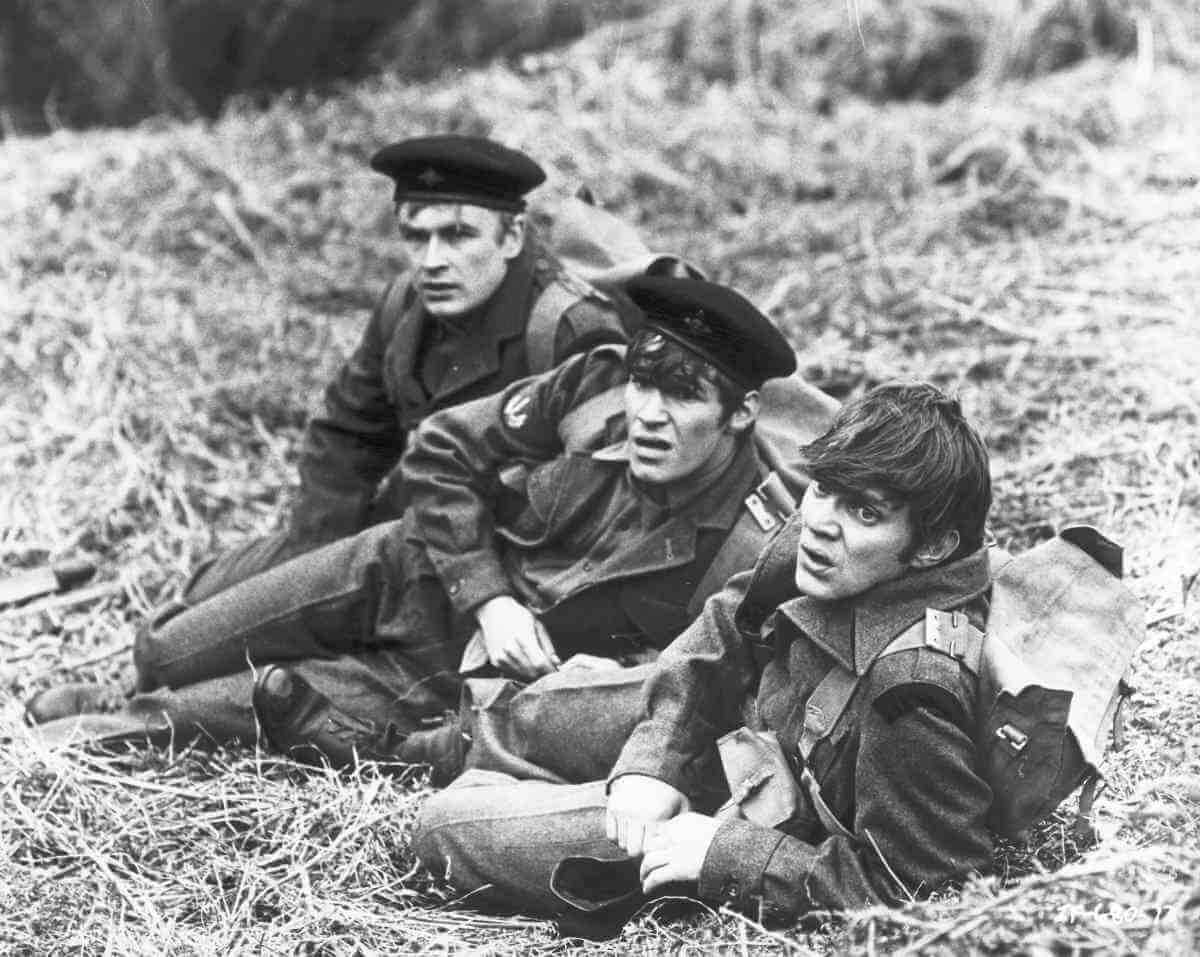Fifty years ago, Jack Valenti, then president of the Motion Pictures Association of America, replaced the existing Production Code with its current “voluntary rating system,” which included the “adults-only” X rating for content considered “unsuitable for minors.” (The adult film industry soon started using “XXX” to distinguish its films.) This month, the Quad Cinema is having a fantastic series featuring dozens of these controversial titles.
Several of the films in the series were made by gay male filmmakers or feature LGBTQ themes and content. In many cases, the filmmakers focused on the counterculture of the era, emphasizing that queer visibility and sensibilities were outside the mainstream.
The 1968 film, “If….” (Dec. 20, 9 p.m.; Jan. 1, 8 p.m.; Jan. 5, 6:40 p.m.), directed by gay filmmaker Lindsay Anderson, chronicles Mick Travis (Malcolm McDowell, in an auspicious film debut), one of three defiant students at a British public school. The film is full of homoeroticism, most notably when Philips (Rupert Webster), a handsome younger student, watches Wallace (gay actor Richard Warwick) in the gymnasium. A later fantasy scene has the older and younger students sharing a bed. But it is a scene where Mick makes love to a nude woman (Christine Noonan) that earned the film an X rating according to Jon Lewis’ book, “Hollywood v. Hard Core.” Others have suggested that the X was generated by the film’s surrealistic ending in which the students open fire on their teachers. Lewis claimed that Anderson, “negotiated an R from the Code and Rating Administration after agreeing to cut some footage.” Regardless of why “If….” was rated X, the film — about asserting one’s individuality against authority — remains as potent today as it did upon release.
McDowell can also be seen in the series in another classic film that was rated X — no, not the infamous “Caligula” — but Stanley Kubrick’s 1971 “A Clockwork Orange” (Dec. 14, 9:05 p.m.; Dec. 25, 1 & 6 p.m.; Dec. 30, 8:50 p.m.). This masterful adaptation of Anthony Burgess’ novel was slapped with an X rating for explicit sex and violence, though the 30 seconds of “offending” scenes were later cut to secure an R rating.
Two other studio films that were rated X at the time of their release (1970) are Michael Sarne’s “Myra Breckinridge” (Dec. 29, 3:20 p.m.; Jan. 3, 6:45 p.m.), the gonzo screen version of out gay writer Gore Vidal’s novel about a sex change, and “Beyond the Valley of the Dolls” (Dec. 15, 5:30 p.m.; Dec. 23, 1 p.m.; Dec. 31, 8:25 p.m.), the Russ Meyer sexploitation film whose screenplay was co-written by Roger Ebert.
“Myra Breckinridge” is a misfiring would-be satirical comedy in which Myron (Rex Reed) becomes Myra (Raquel Welch) and goes off to Hollywood posing as Myron’s widow to secure a claim on her uncle Buck Loner’s (John Huston) estate. In the process, she meets Rusty Godowski (Roger Herron), and, in a scene that earned the film its X rating, takes his manhood by strapping him to a table, stripping him naked, and penetrating him with a strap-on. The sequence is intercut with vintage film clips, but they do not make the rape amusing.

“Beyond the Valley of the Dolls” is also set in Hollywood, where three aspiring pop singers hope to achieve stardom, but fall prey to sex, drinking, and drugs. The film features (mostly topless) nudity, a lesbian love scene, a bisexual male character, and a beheading. Meyers, whose films were often rated X, wanted to add more nudity and sex after hearing the film was getting the adults-only rating. However, the studio, low on money, rushed the film to release instead. It now carries an NC-17 rating.
“Women in Revolt” (Dec. 18, 6:45 p.m.; Dec. 26, 4:45 p.m.) is Andy Warhol and Paul Morrissey’s humorous 1971 satire about a trio of drag queens (Jackie Curtis, Candy Darling, and Holly Woodlawn) who form P.I.G. — Politically Involved Girls, a feminist liberation movement. They disdain men — Jackie considers lesbianism, and Holly is a bisexual nymphomaniac — but they all have sex with guys. There is extensive full male nudity, rape, and a scene of Jackie blowing Johnny Minute (Johnny Kemper), a hunky male hustler. That last act likely secured “Women in Revolt” its X rating, but the visual is mostly Kemper’s bare behind.
Two of John Waters’ campier films, “Female Trouble” (Dec. 21, 6:45 p.m.; Dec. 26, 6:45 p.m.; Jan. 2, 6:45 p.m.) from 1974 and “Desperate Living” (Dec. 21, 8:35 p.m.; Dec. 26, 8:35 p.m.; Jan. 2, 8:35 p.m.) from 1977, will play in the program. Both challenged taste and censors. In the former, Divine, Waters’ fabulous drag star, plays Dawn Davenport, who leaves home, is raped by a man (also played by Divine), and eventually becomes a notorious criminal celebrity.
In “Desperate Living,” the neurotic Peggy Gravel (Mink Stole) and her maid Grizelda (Jean Hill) murder Peggy’s husband and — after an encounter with a cross-dressing cop — flee to Mortville, an outsider community run by the fascist Queen Carlotta (Edith Massey). In Mortville, the women become lovers, meet other lesbians, and try, in their way, to change the status quo. Both films feature explicit (but not erotic) sex and considerable full-frontal nudity (male and female). The violence, which includes cannibalism and a castration, is played for laughs.
Waters, who has had trouble with the ratings board throughout his career, said in a recent phone interview, “My memory is when ‘Female Trouble’ and ‘Desperate Living’ were made, we gave ourselves an X and that rating didn’t hurt it.” The films were released on the midnight movie circuit, where they played to the director’s fan base.
Waters added, “When they came out on DVD, they were submitted [to the board] and got an NC-17. Then, you couldn’t self-rate,” so he lost his desired X rating.

Waters believes these films were rated X not for any particular scene, but for “overall content.”
Another queer filmmaker whose work was uncompromising, was Derek Jarman. His daring, X-rated “Sebastiane” (Dec. 18, 8:45 p.m.; Dec. 26, 3 p.m.) from 1976 fetishizes the title character (Leonardo Treviglio) and includes the first erection in British cinema (courtesy of Ken Hicks). The film, co-directed by Paul Humfress, features an all-male, mostly nude cast (including Warwick from “If….”) speaking in Latin. It played for over a year in its initial release. In his book, “Dancing Ledge,” Jarman wrote about the film’s opening, “In the States it was classed S for Sex and we were unable to advertise it — so the audiences turned up expecting hardcore and were disappointed.”
Audiences expecting something explicit from out gay filmmaker Pedro Almodóvar’s naughty X-rated 1989 film “Tie Me Up! Tie Me Down!” (Dec. 19 9 p.m.; Dec. 23, 7:20 p.m.; Dec. 31, 1 p.m.) may be disappointed that the qualifying controversial scene features Marina (Victoria Abril) pleasuring herself in the bathtub with a toy. Indeed, her pleasure is what delivered the X rating, and not the film’s storyline of Ricky (Antonio Banderas), a released mental patient, literally tying up Marina hoping that he can convince her to marry him — which is far more offensive.
The Quad’s program is certainly provocative. It illustrates how queer content was presented, restricted, and consumed over the past 50 years. It is interesting to see how much — and yet how little — has changed.
RATED X | Dec. 14-Jan. 8 | Quad Cinema, 34 W. 13th St. | quadcinema.com



































